Both Indian and Pakistani cuisines are diverse, with a wide range of offerings, from rice, curry, and fried snacks to meat or veggie-based meals. Given the sheer amount of foods available in these two nations, it’s no surprise that one may get lost in choosing what to eat.
But don’t worry! Just keep reading, and you’ll come out knowing at least one or two things about the cuisine and culture of India and Pakistan. This is a chance for you to get familiar with the bits and pieces of South Asia in general and these two countries in particular.
So, this article will tell you about what the cuisines of India and Pakistan have to offer for local people and visitors alike. Furthermore, you’ll also get to know how people serve them and how they taste. Wait no more. Let’s dive in!
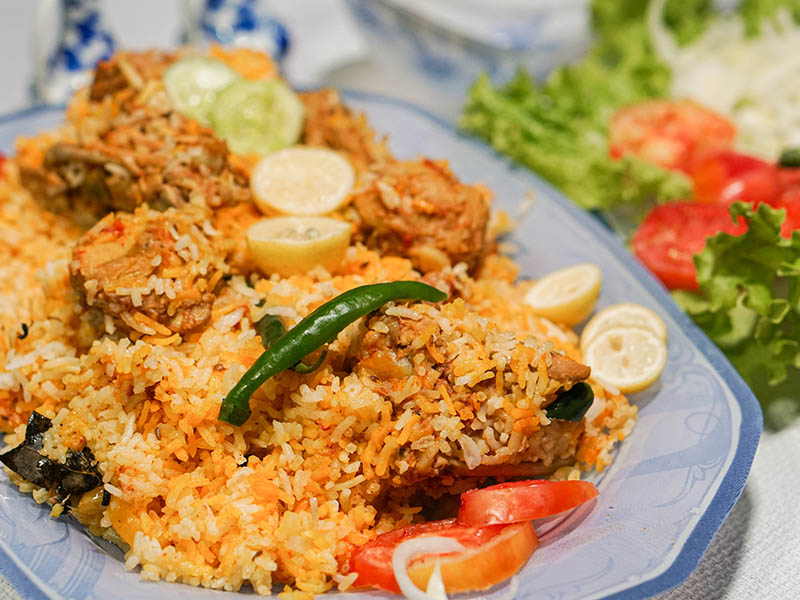
An Overview Of Indian Foods
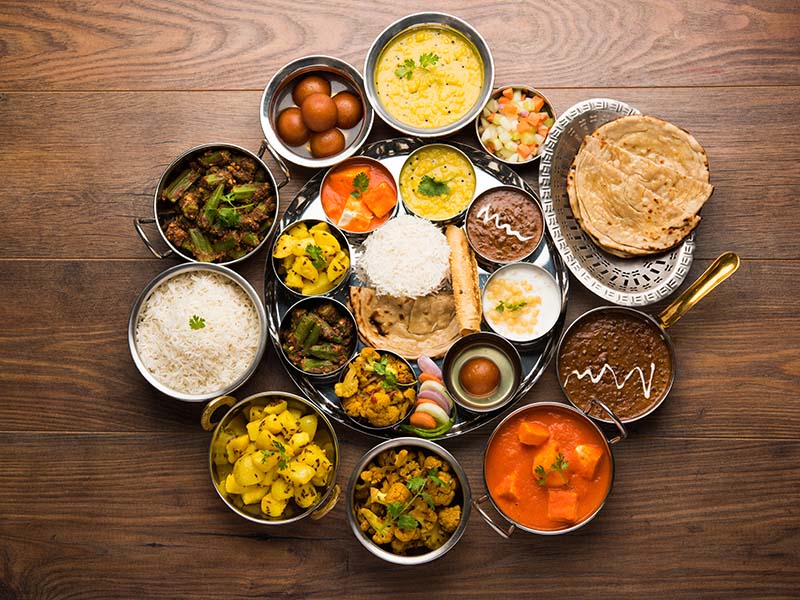
Indian cuisine is well-known throughout the world. This country, with its 8,000 years of history, is no doubt one of the world’s oldest and most diverse cuisines. Its large assortment of dishes results from trading, conquest, religious practices, and many more factors.
Throughout the country, Indian cuisine relies on rice and curries, which are gravy-like or stew-like. Pulses (peas, lentils, and beans) or legumes are another important part of India’s daily meal. In fact, this country is the world’s largest producer, consumer, and importer of this food. (1)
What’s most defining about this land’s food culture is the use of spices. Various combinations mix five, or even up to ten, spices together, creating a unique dining experience. However, the art of Indian cuisine is not the high spicing but the delicacy of it.
Indian cuisine is so diverse that dishes differ from region to region. To see the gist of it, you can see this neat comparison chart below or read more to learn even more information about this topic.
Northern Vs. Southern

The difference between Northern and Southern Indian cuisine is one thing that people talk about the most when it comes to this land.
Northern culinary style is perhaps the most popular outside India. In these parts, you are likely to find rich curries with thick sauces. People often pair them with flatbread and yogurts.
The most common cooking agents are ghee butter. Curries in these regions are usually milder with a creamier texture.
To finish off a meal, people in the North often drink hot and tasty Indian beverages like Chai (tea). On a side note, the side dishes are often flatbreads.
The Southern regions feature the use of coconut milk and seafood as these places have access to the oceans. The dishes lean more on a vegetarian-focused approach, with frequent use of beans, vegetables, and rice.
As South Indian places experience monsoon seasons, there are many native Indian fruits found in the foods. People also often eat their dishes with rice.
Western Vs. Eastern

When it comes to the comparison between West and East Indian cuisine, it’s a similar story. The North and South parts are more commonly known, but the other two directions also have their own mouth-watering offerings.
Both sides use a lot of spices and herbs. Generally, Western Indian cuisine focuses more on using herbs like cloves, thyme, etc. on the other hand, its Eastern counterpart favors the use of spices, especially onion, garlic, fenugreek seeds, cumin mustard, etc.
As a result, the West Indian foods have a more unique flavor while the East has a milder taste. In contrast, the latter owns many unique Indian sweet treats. Thus, people in these parts use more dairy products like yogurt, butter, and cheese.
Meanwhile, those in the West prefer to cook with coconut products such as dried coconut or coconut milk. As a result, there are more savory dishes.
Explore an Indian dining experience here.
What People Talk About When Talk About Pakistani Cuisine
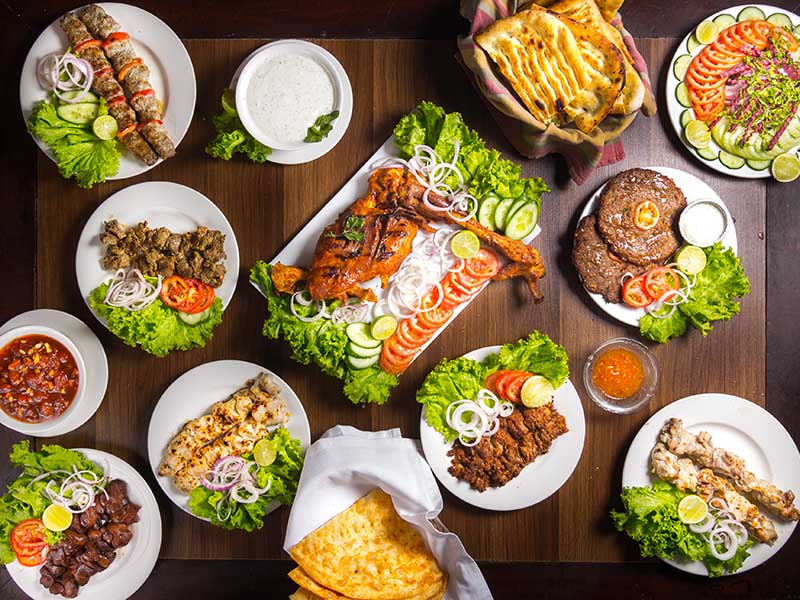
The nation is young, having just come into existence in 1947. But despite its relatively young age, this land’s lesser-known cuisine is just as rich and diverse as its sibling, India. It’s a beautiful blend of neighboring nations’ cooking techniques, from the far East, the Middle East, to India.
Similar to India, geographical location is also a big element that affects the flavor and variety of Pakistani foods. For years, people with different backgrounds and faiths have been living together in four administrative provinces of Pakistan.
In each of these provinces, you’ll find different dishes with unique aromas and presentations. Learn more about them by scrolling down.
The Four Provinces
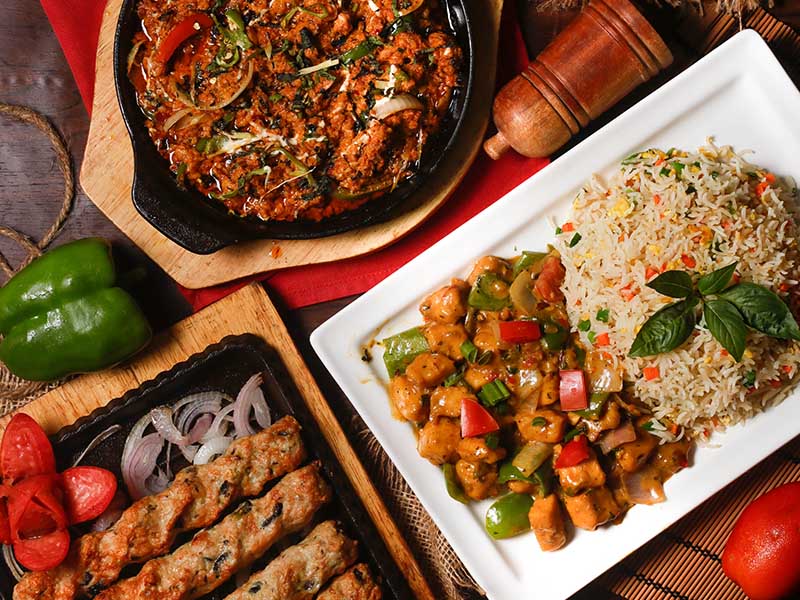
In general, the Northern parts’ weather is a whole lot cooler. People often consume plain barbecued meats and a more mild palate. While in the South, meals are rich in spices, and it’s normal to consume yogurt-based drinks after meals as a way to counteract the spice.
The Pashtun and Balochi cuisines are traditionally non-spicy and milder. Meanwhile, Sindh and Punjab foods are much more similar to their Indian counterparts. People often describe them as “spicy” or “highly seasoned”.
Sindh

Situated in the southern coastal region of Pakistan, Sindh is the third biggest province of this country. Sidth people account for the majority of the population. Karachi, the capital city, is the major economic hub of Pakistan.
The Sindh people are famous for their traditional food items. Most people refer to these as Sindh cuisine. In most households in this province, you would find people eating flatbreads with curry and rice at a meal. They are also well-known for the food preparation methods that require you to pay attention to the steps.
Punjab
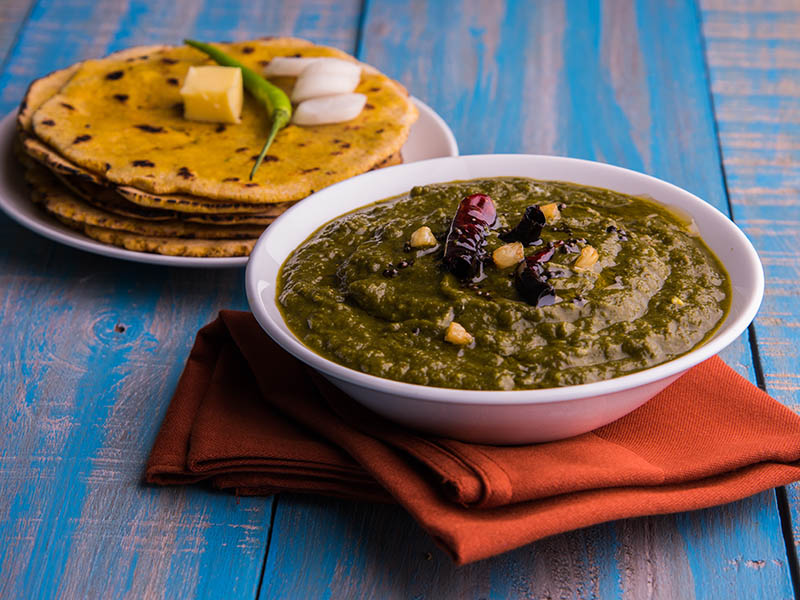
Punjab is a province located in Eastern Pakistan. When the India-Pakistan partition happened, the region of Punjab was also partitioned between the two states. The larger western part of Punjab went to Pakistan, while the Eastern regions went to India.
This province has a system of five rivers, hence the name Punjab “land of five rivers”. People call the Punjab culinary style “Punjabi cuisine.” Being an agricultural hub, this province sees heavy use of locally grown food with rich, buttery flavors.
The population comprises mostly Sikhs, so people in this region are predominantly vegetarian. Having said that, meat fares are equally diverse just as their veggie recipes.
One of its most iconic cooking methods is tandoori, which has now become famous in India, the UK, Canada, Hong Kong, and other parts around the globe. A tandoor oven is a cylindrical clay oven heated by a charcoal fire, and you use it for cooking meat.
Balochistan
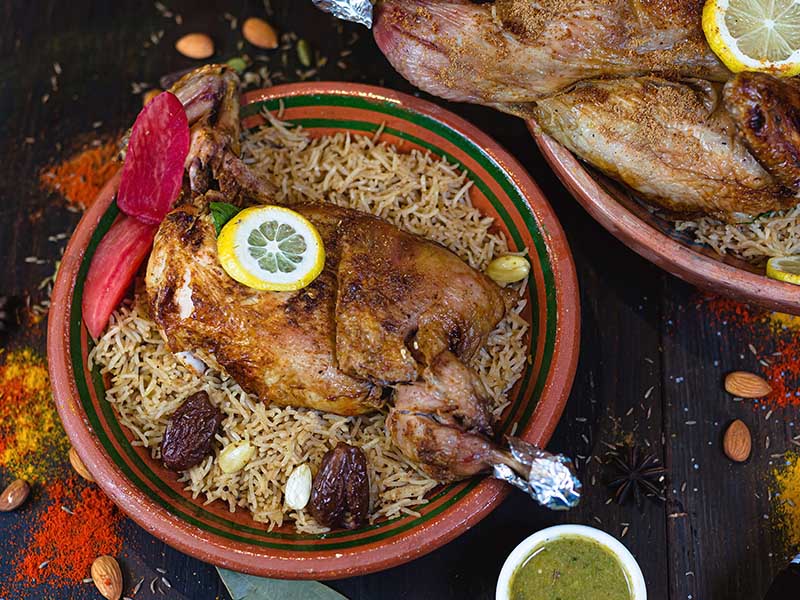
Balochistan people generally prefer meat, especially beef, lamb, and goat. Some of the most well-known dishes like Landhi (dried lamb meat) or Sajji (whole roasted chicken/lamp) from this province reflect this.
Balochistan has many distinctive cooking styles. For instance, dumpukht is the name of a dish and also a cooking method. Dumpukht involves the use of a round, heavy-bottomed pot. The Baloch people then toss ingredients into this pot, seal it with a lid, then put it on low heat.
Sajji is the pride of Balochi cuisine. It’s a whole chicken or lamb stuffed with rice or potatoes, brushed with spices, and roasted over a fire pit. What’s special about this dish is that people slow-cook it for hours. The result is a crispy outside with tender meat and a unique aroma of barbecued meat.
Khyber Pakhtunkhwa (KPK)
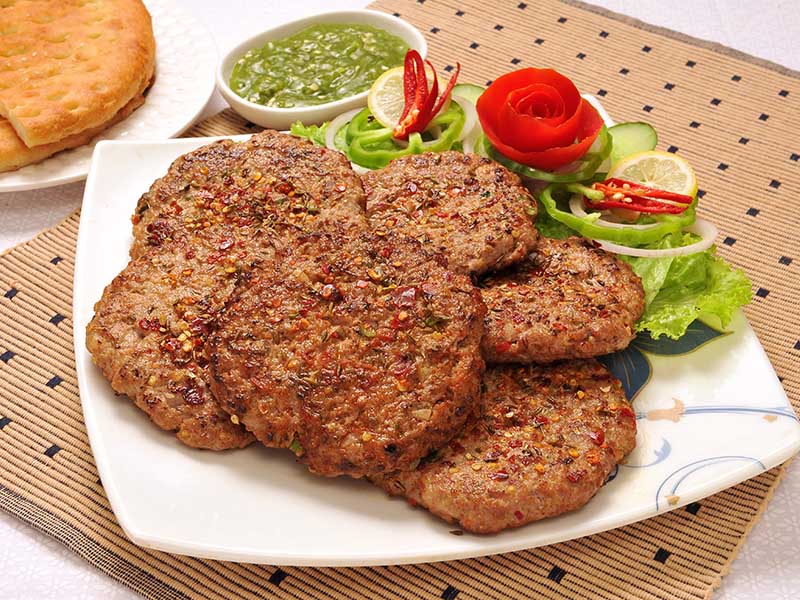
Khyber Pakhtunkhwa (KPK, formerly known as Northwest Frontier Province – NWFP) lies in the northwestern region of Pakistan, neighboring Afghanistan. Pashtuns and Hindko speakers account for the majority of people living here.
Thus, KPK is famous for Pashtuns cuisine. In this province, you would often find rice dishes, kebabs, and meat-based meals. These foods are accompanied by dairy products, nuts, and fruits. As people rear lamb in this region, most recipes include the use of its meat.
Not just the food, but almost everything changes when you go from Northern parts to Southern regions of India.
The Common Traits Of Indian And Pakistani Cuisine
There are common threads that tie the two nations’ food cultures together. This is because they are close neighbors and share a border. Not to mention they used to be one country. So there is bound to be some overlap or similarities in their culinary arts.
| Shared Traits | Indian And Pakistani Cuisine |
| Religious And Regional Influences | ● Cuisines from different directions differ even though they are in one country. ● Hinduism and Mulism affect how Indians and Pakistanis consume their meat and veggie meals. |
| Curry | There is a variety of curry dishesEaten alongside flatbreads |
| Stable Foods | Flatbreads, rice, and lentils are staples in many people’s home |
| Spiciness | Both cuisines are generally spicier than other nations’ foods. |
Influences From Religions And Regionality
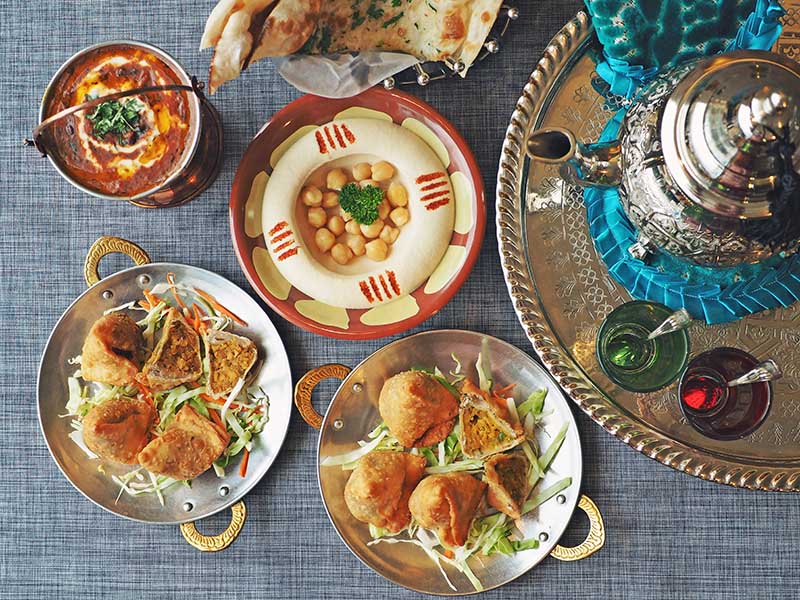
Reading this far, maybe you’ve already noticed this common trait. Broadly speaking, both have their religious and regional differences.
Both of these lands are a melting pot. Various people from different ethnicities, speaking different languages and cooking in different ways, come together and settle in the nations. As a result, Indian and Pakistani cuisine is a blend of many cultures.
The dominant religions in India and Pakistan are Hinduism and Mulism, respectively. These two beliefs affect not only the lifestyle but also the way Pakistanis and Indians diet (more on this later).
Cury, Cury, Cury
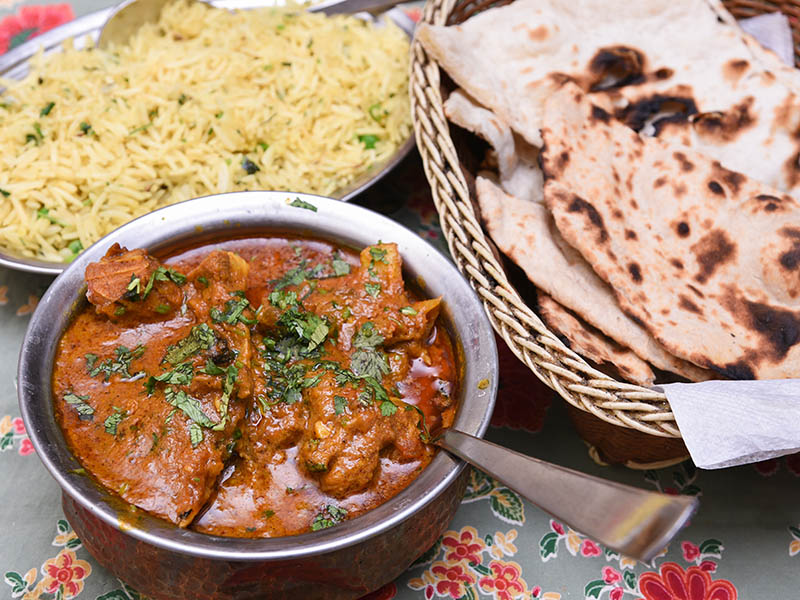
It’s undeniable that most people associate Indian and Pakistani foods with curry. And there is indeed a variety of curry dishes in both countries, meat or vegetables.
People often eat curry alongside flatbreads (Naan). The way to eat it is to tear off the bread, use the torn-apart pieces to scoop up the curry base, and eat.
Flatbreads, Rice, And Lentils Are Staple Foods
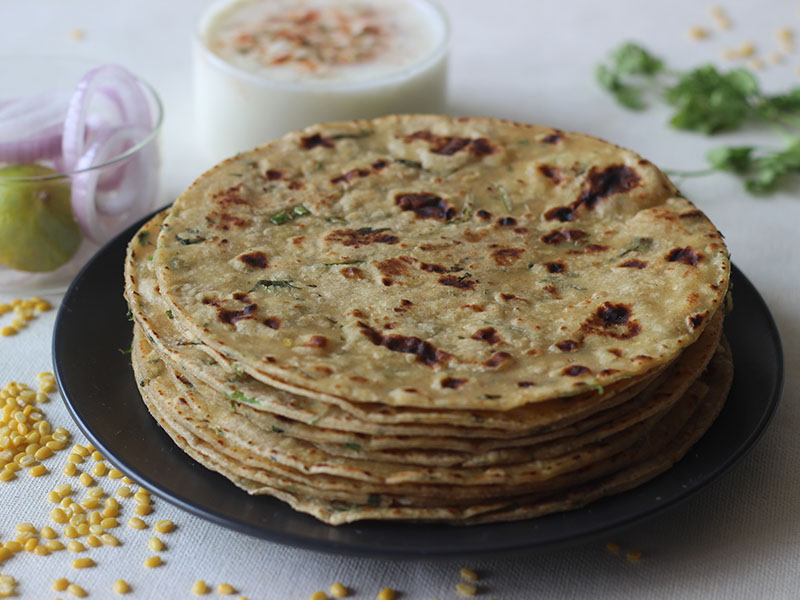
Given that wheat is the predominant crop in Pakistan and northern India, flatbreads are a main staple food for many households. They are either plain or have many savory fillings. Some of the most commonly found flatbreads include Naan, Roti, and Paratha.
Besides flatbread, rice and lentils are also staples in both countries. People often steam or stir fry rice, or use rice to make bread. Lentils are ideal for putting into soups or stews in their cuisines.
Both Are Extremely Spicy
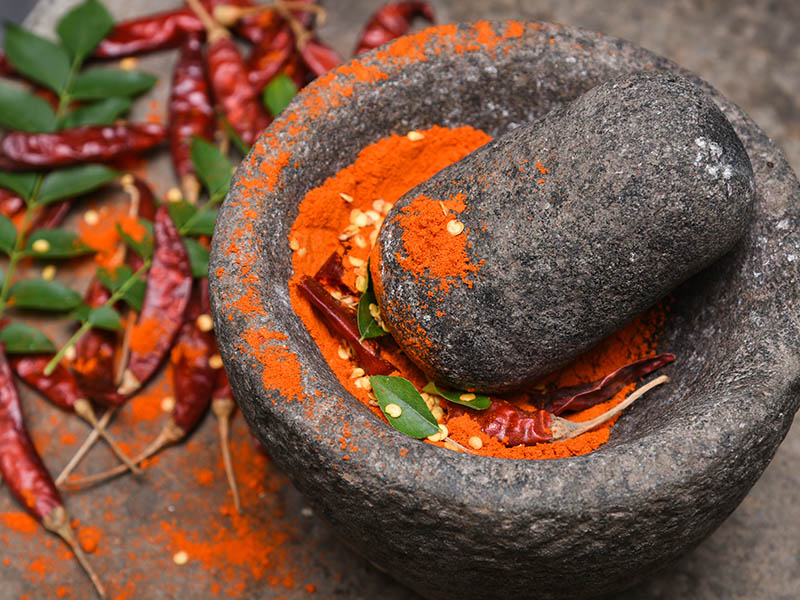
Step into any Pakistani or Indian-style restaurant, and the menu will surely be a long list of spicy dishes. Even dishes that incorporate Indian or Pakistani signature fruits and veggies tend to be spicy and salty.
In general, Pakistani food is considered to be spicier than its Indian counterpart. However, keep in mind that not all delicacies are super spicy.
Discover if the invited Pakistanis and Indians recognized their home foods in this fun test.
What Differentiates Pakistani Foods From Indian Ones
As mentioned above, you will find some overlaps between the two. But over time, as per developments throughout the years, Pakistani and Indian cuisine starts to have some distinct characteristics.
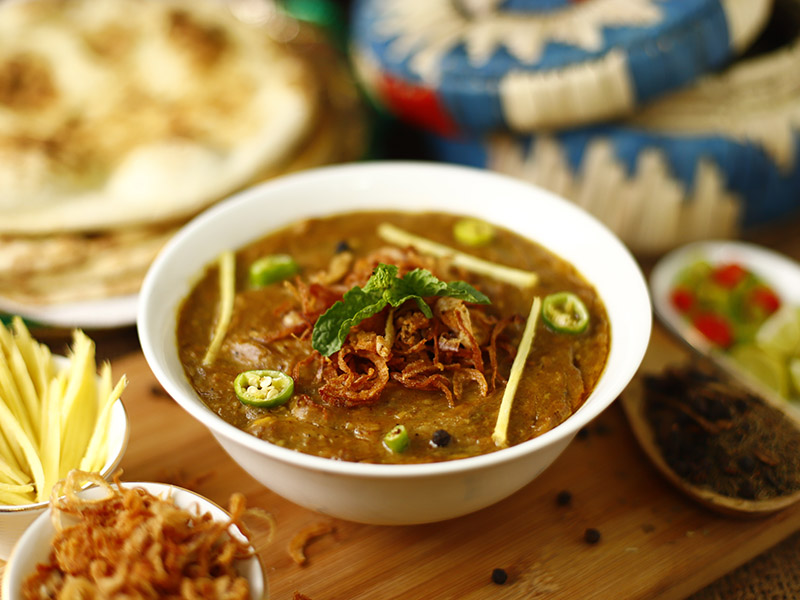
Meat And Vegetables
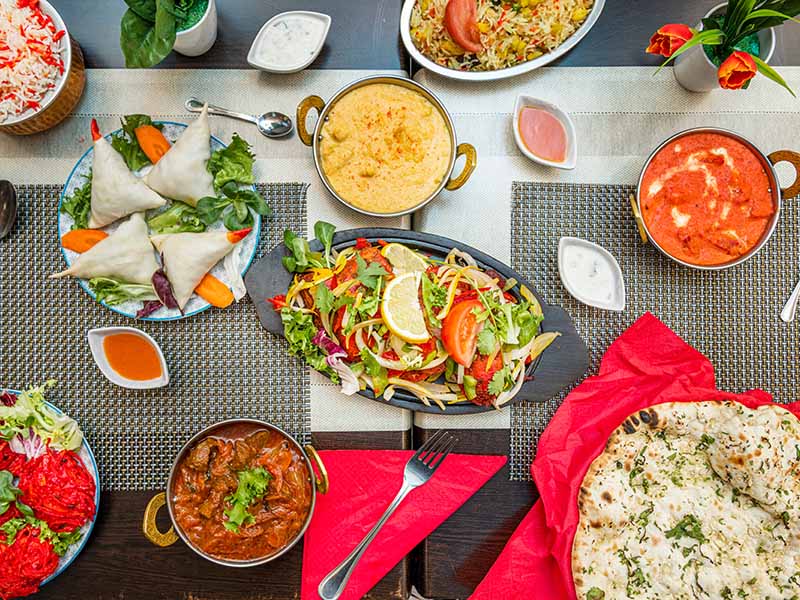
As mentioned above, religious practices shape the cuisine of these two nations. This is one thing that they have in common but is also what sets them apart.
Hinduism is prevalent in India, and many secs of this religion prohibit eating meat. Thus, many Indians have a vegetarian diet. On another note, you will rarely see beef dishes because the Hindus consider the cow their sacred animal.
On the other hand, the majority of Pakistanis are Mulism. And in this religion, eating pork is considered haram (sinful, forbidden). As a result, Pakistani cuisine predominantly consists of lamb, chicken, and fish instead of pork.
Fun fact: Drinking alcoholic drinks is also considered a haram, so the majority of Pakistani beverages are non-alcoholic or milk/juice-based. Nonetheless, there is a variety of delicious drinks that are worth trying and exploring.
Spices
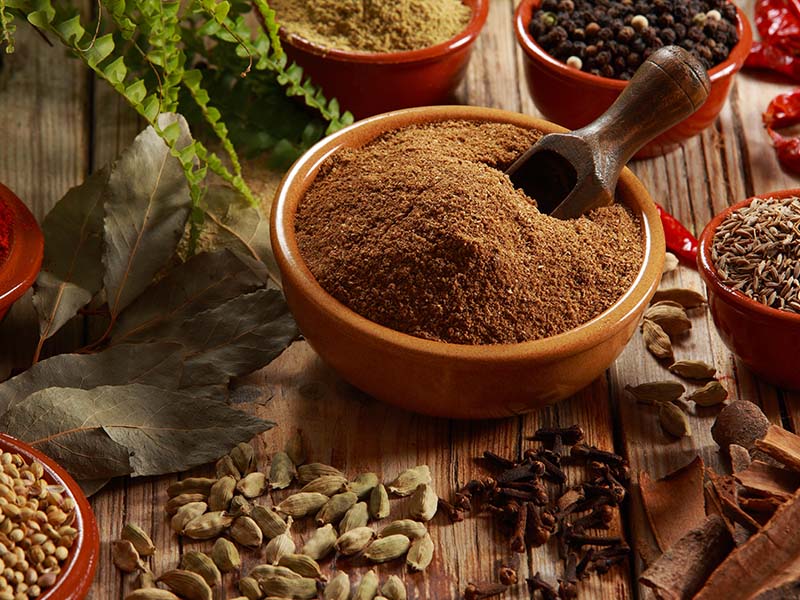
Generally, the spicing in India tends to be more elaborate and with a spice palette that is rich and varied than in Pakistan, whose spice array is simpler. There are at least 10 basic spices in Indian cooking. For example, cinnamon, fenugreek, coriander, cumin seeds, etc.
Pakistani dishes often employ the use of turmeric and black pepper, which are said to have anti-prostate cancer properties. (2) Aside from those two, some spices that the Pakistanis put in their foods are garlic, cumin seeds, red chili powder, etc.
Cooking Methods
Frying, boiling, sauteing, searing, and grilling are some of the most common methods used to cook food. Indians also utilize these techniques, but what’s special is that they use a combination of 2-6 methods at the same time.
For instance, Bhunao is an Indian-style sauteing, but it also involves stir-frying and stewing. You cook foods at low to medium heat, then regularly stir and add a dash of liquid to prevent the dishes from sinking to the bottom.
Pakistanis often marinate their meals with garnishes or seasonings before roasting. One of the most popular cooking methods is korma. This involves slow-cooking meat or poultry marinated in a mixture of yogurt, spices, lemon juice, and green papaya.
Popularity In The West
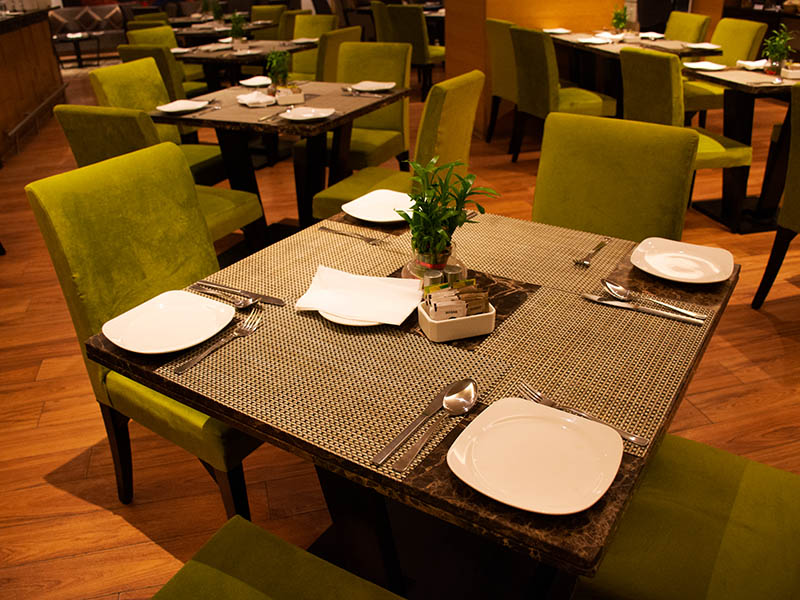
The best way to describe Pakistani cuisine in the world is under-represented. Outside of its home, the Pakistani dishes are relatively unknown. Or most people would think of them as food from Indian cuisine.
When discussing South Asia cuisine, most people would think of Indian first. Outside of the country, Punjabi-inspired meals reign in the West and the US. (3)
The theory is that the Indian population is among the highest in the world, so the number of immigrants coming to other continents and introducing their cuisine there is likely to be higher.
Interestingly, both Indian and Pakistani foods in the West are fusion foods. So, they are not very similar to the foods that are in their home countries, to the point that the locals consider these West-based versions as “aliened dishes”.
Indian cuisine even reached out to Russian! See more here.
Dairy Products
The use of dairy products such as yogurt or ghee is another difference between the two nations’ cuisine. Pakistani dishes are less likely to contain these ingredients because they mainly consume meat. As for Indians, they have a more veggie-focused diet so dairy products are plentiful in their meals.
See a brief comparison of Pakistan and Indian dishes here.
Mind-Blowing Indian Recipes That You Must Try
Now, it’s time to get into the kitchen and quip up some Indian dishes for yourself! Just read these easy-to-follow recipes and do as the instructions say. You won’t have to deal with your cravings for Indian foods while the restaurants are closed no more.
Masala Cheese Puri (Poori)
This is a delightful breakfast that anyone can make. These puri balls are also perfect for your kids’ lunch boxes. All it takes is 10 minutes of prep time and another 10 minutes of actual cooking. So why don’t you try it out now!?
Indian Jeera Rice (Cumin Rice)
The Indian Jeera Rice recipe is not your typical side recipe from India. It’s fluffy and puffed-up cumin rice, which is appealing to the eyes and perfect in flavor. Roll your sleeves, get into the kitchen, and within 20 minutes, you can explore this dish’s taste.
Pakora (Indian Vegetable Fritters)
Indian cuisine is not all about mains or side dishes. Pakora is a healthy Indian starter or snack as it contains vegetables. Interestingly, you can find it sold as a snack on the street or at a restaurant. Plus, it’s gluten-free and vegan-friendly.
The Best Pakistani Recipes That You Don’t Want To Miss
Have you got your fill of Indian cuisine yet? Let’s get to its close neighbor. I’ve told you all about the deliciousness of Pakistani foods, and here are some recipes so that you yourself can experience the great world of this country’s offerings.
Pakistani Chicken Biryani
Chicken Biryani (Mixed Rice With Chicken) is certainly a crowd favorite, and not without good reasons. There are Biryanis in India, but the Pakistani version has its charm too. Roll your sleeves and see for yourself what makes this Chicken Biryani so special.
Achari Aloo Ki Sabzi (Potatoes In Spicy Pickle Masala)
While it’s true that the Pakistani recipes are meat-heavy, it doesn’t mean that there are no veggie dishes. Achari Aloo Ki Sabzi is one of many such examples. The warmth of wrapped roti and spiced potatoes make for a comforting and delightful treat.
Easy Pakistani Haleem Recipe (Instant Pot)
The original Haleem (Meat Stew With Lentils And Grain) takes hours after hours to cook. But not with this recipe. The use of an instant pot reduces the time of making Haleem to just under 30 minutes.
FAQs
My in-depth article certainly has provided you with so much information. But surely, you must still have a question or two. Then scroll down below to see my answers to the most common inquiries about these two nations and their foods.
Indian Vs. Pakistani Cuisine: You Can’t Go Wrong With Either
Both are unique in their own way. The flow of several cultures and languages into these vast lands and how they come together are what make the current Indian and Pakistani cuisine.
When traveling to India and/or Pakistan, you are now capable of picking what to eat without getting lost so much as before. And now it’s your judgment to see which one is more suited to your taste.
Reading this article, not only did you learn the difference between Indian and Pakistani foods but also the know-how of their common traits and some recipes under your belts.
If so, please don’t hesitate to leave a comment below and tell everyone about this telling article which helped you attain new knowledge about these two wonderful countries and their rich cuisines.

References
- International Trade Administration | Trade.gov. 2021. India – Food and Agriculture Value Chain.
- Irshad, S., Ashfaq, A., Muazzam, A. and Yasmeen, A., 2017. Antimicrobial and Anti-Prostate Cancer Activity of Turmeric (Curcuma longa L.) and Black Pepper (Piper nigrum L.) used in Typical Pakistani Cuisine. Pakistan Journal of Zoology, 49(5).
- Thediplomat.com. 2010. Indian Food and the West.


Linda Dean
Expertise
Culinary Arts, Food Journalism, Global Cuisine, Exploration, Recipe Development, Cultural Food Studies, Culinary Travel and Storytelling
Education
Culinary Institute of America, Hyde Park, NY
Program: Associate in Culinary Arts
Focus: Developed a comprehensive understanding of global cuisines and essential cooking techniques. Engaged in intensive hands-on practice in both kitchens and real-world settings, guided by expert chefs. This program emphasized the application of culinary skills in professional environments, preparing students for a variety of roles in the culinary industry.
City, University of London, London, UK
Program: BA Journalism
Focus: Gained expertise in media studies with a strong foundation in reporting, editing, and communicating. While the program focuses broadly on journalism, the skills acquired apply to food journalism, including the ability to analyze and report on food culture and culinary trends effectively.
Linda Dean is an experienced chef and food writer who loves exploring flavors from around the world. Trained at the Culinary Institute of America, Linda has spent over ten years mastering the art of making dishes that truly represent different cultures. She also studied journalism at City, University of London, which helps her write engaging stories about these foods.
On heythattastesgood.com, Linda shares recipes that bring the world’s kitchens to her readers. She focuses on authentic tastes and the stories behind them, making it easy for anyone to try international cuisine at home.